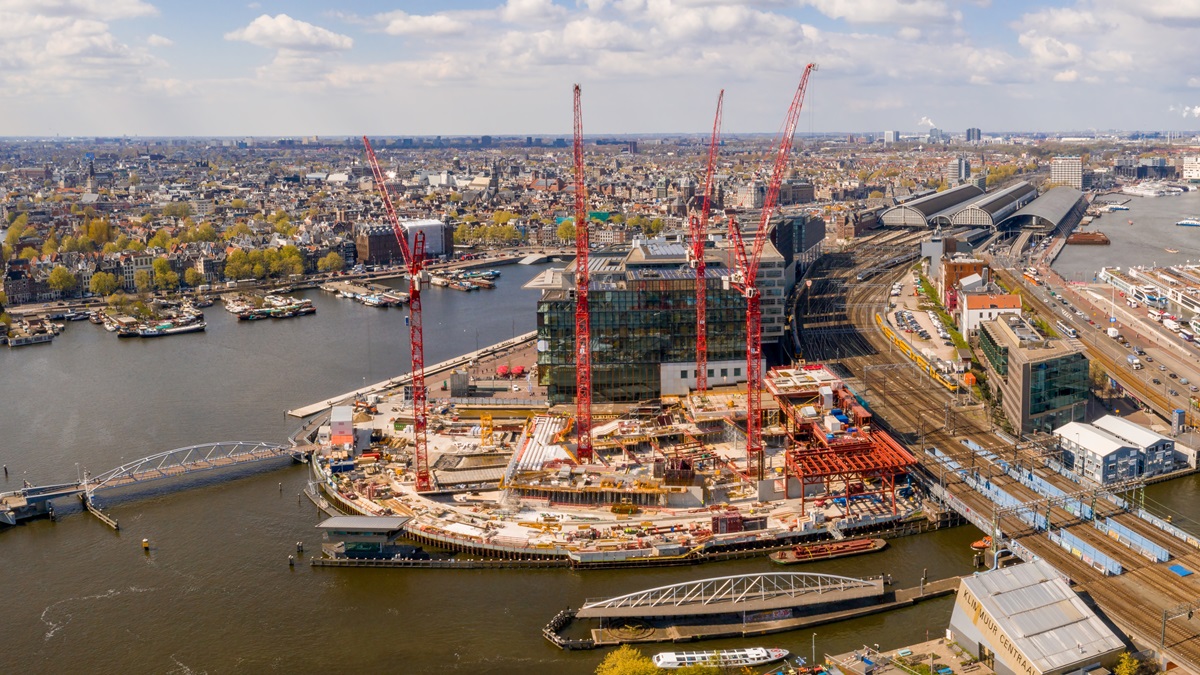New UNCTAD analysis shows global FDI trends defied earlier expectations but highlights that growth was driven by a few European “conduit” economies and raises concerns about the decline in international investment projects.

© Shutterstock/Pandora Pictures | A major construction project in Amsterdam.
Global foreign direct investment (FDI) defied earlier expectations for 2023, growing by 3% and finishing the year at an estimated $1.37 trillion, according to UNCTAD's latest Global Investment Trends Monitor published on January 17.
However, the report highlights a key nuance – the overall uptick was driven mainly by a few European "conduit" economies, which often act as intermediaries for FDI destined for other nations.
Strikingly, when these conduit economies are excluded, global FDI flows show a steep 18% decline in 2023. The rest of the European Union recorded a steep 23% decline, and the United States, the world's leading FDI recipient, saw a 3% dip.
The UNCTAD report also underscores a worrying decline in international investment project announcements last year, especially in project finance and M&As, which declined 21% and 16%, respectively. Meanwhile, greenfield project announcements dipped by 6% in number but grew by 6% in value, bolstered in part by manufacturing.
Looking ahead, the report says “a modest increase in FDI flows in 2024 appears possible”, citing stabilization for inflation and borrowing costs in major markets.
But it warns that significant risks persist, including geopolitical tensions, mounting debt in many countries and concerns about further global economic fragmentation.
Developing Asia’s FDI engine slows
The overall FDI landscape for developing countries in 2023 revealed a 9% decline, amounting to $841 billion. Developing Asian countries bore the brunt with a 12% decrease.
China reported an unusual 6% drop in FDI inflows but showed an 8% growth in new greenfield project announcements.
India, another regional giant, saw a 47% drop in FDI inflows but remained among the top five global destinations for greenfield projects.
The Association of Southeast Asian countries (ASEAN), traditionally an engine of FDI growth, recorded a 16% decline. Yet the region remained attractive for manufacturing investments with a remarkable 37% increase in greenfield project announcements in nations like Viet Nam, Thailand, Indonesia, Malaysia, the Philippines, and Cambodia.
Conversely, FDI flows fell by a modest 1% in Africa and held steady in Latin America and the Caribbean, thanks in part to increases to Central America and 21% growth in Mexico, the region’s second-largest economy.
Industries linked to global value chains see project investments grow
The report’s sectoral analysis for 2023 showed an uptick in project numbers in sectors that rely heavily on global value chains, including automotive, textiles, machinery and electronics.
Meanwhile, the semiconductors sector recorded a 10% decline in the number of greenfield projects and a 39% drop in their value, following robust growth in 2022.
Renewable energy faces first decline since Paris Agreement
The report raised concerns about the renewable energy sector, which saw a 17% decrease in new international project finance deals and a 10% decline in their value.
This marked the first decline since the Paris Agreement in 2015.
Mixed results for sustainable development investment
The number of international investment projects announced in developing countries in sectors relevant to the Sustainable Development Goals (SDGs) remained relatively stable in 2023. However, SDG-related international project finance deals showed a 27% decline in numbers and a 40% drop in value.
On the other hand, greenfield projects aligned with SDGs recorded 12% growth in number and a 6% rise in value. The food and agriculture sector showed marginal growth, while most other sectors reported declines.



